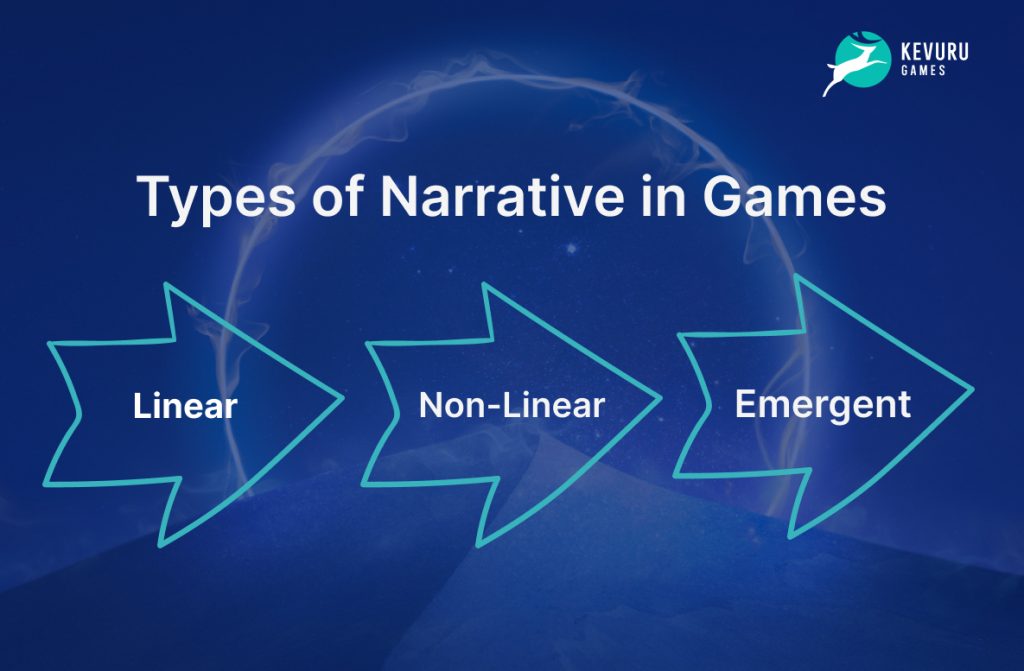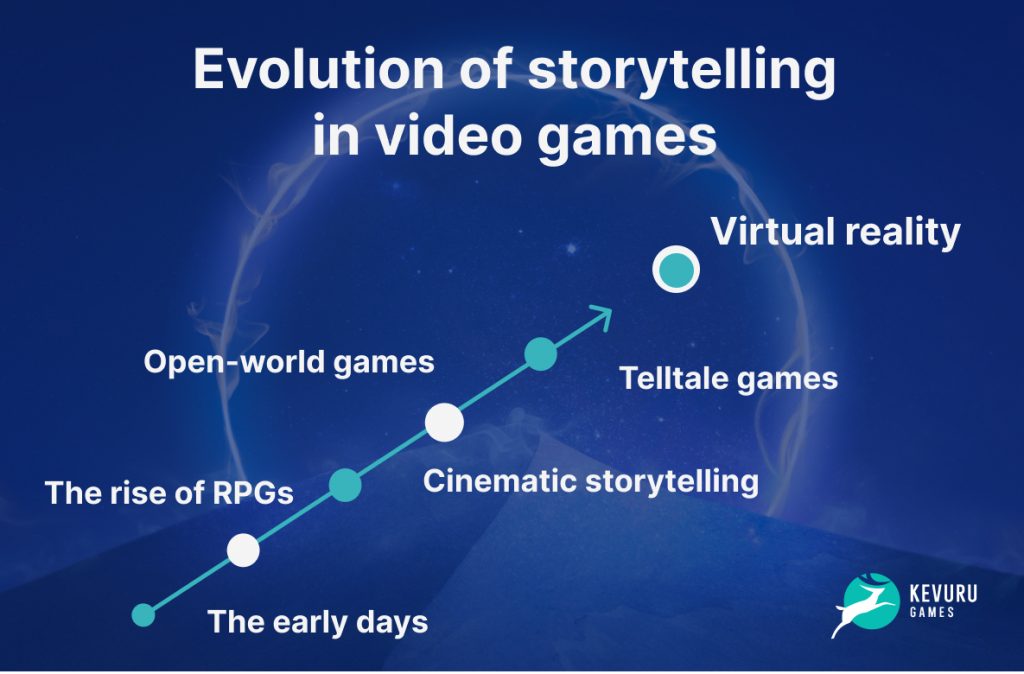
Introduction
Defining Narrative Techniques in Video Games
Narrative techniques in video games encompass a variety of strategies that developers utilize to weave engaging stories and rich character developments into their gameplay. Unlike traditional storytelling mediums, games allow players to actively participate in the narrative, transforming them from passive consumers into active participants.
Typically, these techniques may include:
- Dialogue Trees: Allowing players to choose conversation paths that affect character relationships.
- Cutscenes: Cinematic sequences that drive the plot forward.
- Interactive Environments: Objects or details in the game world that reveal lore or backstories.
Significance of Storytelling in Video Game Development
The significance of storytelling in video game development cannot be overstated. Well-crafted narratives can enhance immersion and elevate the overall gaming experience. When developers prioritize storytelling, they create a sense of emotional investment among players, transforming fleeting moments of gameplay into impactful memories.
For instance, consider playing The Last of Us. The character-driven narrative coupled with intense emotional stakes creates a bond with players that lingers long after the final credits roll. Similarly, games like Bioshock Infinite demonstrate how complex plots can deliver thought-provoking themes.
In summary, narrative techniques are essential for immersive gaming experiences that stick with players, highlighting the evolving role of storytelling in this digital age.

Understanding Storytelling Elements
Character Development and Arcs
Character development is the bedrock of compelling storytelling in video games. When players connect with distinctive characters and witness their growth, it deepens emotional engagement. Each character ideally has a clear arc—a transformation that takes them from a starting point to a significant change.
Consider the transformation of Ellie in The Last of Us. Players experience her evolution from a naive girl to a resilient survivor, making every choice she faces feel personal.
Plot Structure and Pacing
Plot structure and pacing are equally crucial in keeping players invested. A well-paced narrative ensures players are both challenged and intrigued, maintaining a rhythm that alternates between tension and relief.
Key plot structures often include:
- Three-Act Structure: Introduction, rising action, climax, falling action, and resolution.
- Character-driven Plots: Where decisions significantly pivot the storyline.
For instance, in Red Dead Redemption 2, the storytelling deftly blends character emotions with plot progression, creating an experience that feels both open and tightly woven.
Setting and World-building
The setting and world-building serve as the canvas that paints the narrative. A richly crafted world invites players to explore, discover secrets, and immerse themselves in the story.
- Attention to Detail: From the bustling streets of an urban dystopia to the expansive landscapes of a fantasy realm, every detail contributes to the overall experience.
- Lore and History: Integrating backstory into the environment invites players to uncover the narrative at their own pace.
When all these elements come together, they form a cohesive narrative that not only entertains but profoundly resonates with players, forging unforgettable gaming moments.

Immersive Storytelling Strategies
Player Agency and Choices
Player agency is a cornerstone of immersive storytelling in video games. When players feel their choices impact the trajectory of the narrative, they become more invested in the outcome. This sense of ownership allows for multiple possible paths and endings, creating a personalized experience.
Take, for example, The Witcher 3: Wild Hunt. The decisions Geralt faces—whether to ally with certain factions or make morally ambiguous choices—can lead to drastically different consequences, significantly affecting character relationships and the story’s outcome.
Non-linear Narratives
Non-linear narratives offer an engaging departure from traditional storytelling techniques. Players can navigate plots in a way that feels organic and tailored to their preferences. This structure encourages exploration and multiple playthroughs.
Games like Life is Strange excel in this realm, enabling players to rewind time and alter decisions, creating new pathways and outcomes that enhance emotional resonance. By allowing players to revisit choices, developers foster deeper connections with the narrative.
Environmental Storytelling
Environmental storytelling adds another layer to immersion. This method uses the game’s world as a narrative tool, inviting players to discover stories through their surroundings.
Think about the haunting remnants found in Dark Souls—every item, location, and character holds backstory elements that enhance the lore without explicit exposition.
By employing these immersive storytelling strategies—player agency, non-linear narratives, and environmental storytelling—developers create a rich tapestry of experiences that keep players not only engaged but also deeply connected to the narrative.

Impact of Narrative Techniques on Player Experience
Emotional Engagement and Connection
The impact of narrative techniques on player experience is profound, particularly in fostering emotional engagement. When players connect with the characters and their journeys, the stakes feel real. For example, the heart-wrenching relationship between Joel and Ellie in The Last of Us showcases how vulnerability and sacrifice create a deep emotional bond. Players often find themselves invested beyond the screen, caring for the characters they control.
Some effective techniques to enhance emotional engagement include:
- Relatable Motivations: Crafting characters with believable desires and flaws makes them more human.
- Consequential Relationships: Player choices that affect relationships create a sense of ownership over the story.
Creating Memorable Moments
Narrative techniques also play a vital role in creating memorable moments that linger in players’ minds long after they’ve put down the controller. Iconic scenes, from twists to tragic sacrifices, can become touchstones in gaming culture.
Consider the incredible plot twist in Bioshock Infinite—a moment that reshapes how players view the entire narrative. These unforgettable instances elevate the overall experience.
Player Empowerment through Storytelling
Finally, storytelling grants players a sense of empowerment. The choices made and narratives shaped by their actions foster a sense of agency that traditional storytelling cannot replicate. This empowerment enables players to explore moral dilemmas and consequences, challenging them to consider their values within the game’s context.
Overall, well-executed narrative techniques profoundly impact player experiences, ensuring that they not only remember the games they play but also reflect upon the stories they engage with on a personal level.

Case Studies: Analyzing Successful Storytelling in Video Games
The Last of Us
The Last of Us stands as a landmark in video game storytelling, seamlessly blending character development with a post-apocalyptic narrative. The relationship between Joel and Ellie is masterfully crafted, evolving from reluctant allies to a father-daughter bond. Players are immersed not only in their struggles for survival but also in their emotional journey, which culminates in gut-wrenching choices that challenge moral compasses. Key techniques include:
- Rich Character Arcs: Each character undergoes significant transformation, revealing their vulnerabilities.
- Emotional Stakes: The storyline hinges on themes of love, loss, and sacrifice, leaving a lasting impact.
Bioshock Infinite
Next, Bioshock Infinite captivates players with its intricate narrative and profound themes. The game explores concepts of choice, identity, and morality within a non-linear framework. Players navigate through a visually stunning world while gradually uncovering shocking truths about the characters and their fates. Noted for:
- Thought-Provoking Themes: The exploration of alternate realities and societal issues elevates the narrative.
- Memorable Plot Twists: Key revelations challenge players’ perceptions, making it a conversation starter among gamers.
Red Dead Redemption 2
Lastly, Red Dead Redemption 2 epitomizes world-building and character depth. The expansive open world feels alive, with every interaction rich in narrative potential. Arthur Morgan’s character arc echoes themes of redemption and loyalty. The storytelling flourishes through:
- Immersive World-Building: Every detail, from bustling towns to untamed wilderness, tells a story.
- Complex Relationships: Interactions with various characters add layers, enhancing emotional investment.
These case studies reflect how successful storytelling in video games can create immersive experiences that resonate with players long after the adventure concludes.

Evolving Trends and Future Possibilities in Video Game Narratives
Virtual Reality Storytelling
As gaming technology advances, virtual reality (VR) storytelling emerges as a groundbreaking frontier, enabling players to step directly into the narrative. Unlike traditional gaming experiences, VR offers an unparalleled level of immersion, allowing players to interact with the environment and characters in a visceral way. Imagine becoming a character in your favorite game, where every decision feels palpable.
Notable advancements in VR storytelling include:
- 360-Degree Environments: Players can explore beautifully crafted worlds that respond to their presence.
- Emotional Immersion: The physical aspect of VR can amplify emotional connections, especially in narrative-driven games like Half-Life: Alyx.
Interactive Storytelling Platforms
Alongside VR, interactive storytelling platforms are transforming how narratives are crafted and experienced. These platforms empower players to share their stories and shape content, blurring the lines between creators and consumers. Games like Dreams exemplify this trend, allowing users to design levels, characters, and narratives that can be shared within the community.
Key features of interactive storytelling include:
- Community Collaboration: Players can build upon each other’s ideas, fostering creativity and collective storytelling.
- Dynamic Narratives: With adaptive storytelling elements, games can respond in real-time to player actions, leading to unique experiences for each individual.
As these trends evolve, the possibilities for video game narratives are expanding, paving the way for more immersive, interactive, and personalized experiences. The future of storytelling in gaming promises to be as dynamic and multifaceted as the players who engage with it.

Concluding Remarks
Recap of Key Narrative Techniques
As we reflect on the myriad ways storytelling influences video games, several key narrative techniques stand out. From the emotional resonance found in character development, as seen in games like The Last of Us, to the intricate plotting of Bioshock Infinite, these elements shape not only gameplay but also player experience. Let’s recap some critical techniques:
- Player Agency: Empowering players to make impactful choices enhances emotional investment.
- Environmental Storytelling: Using the game world to convey narrative intricacies creates a deeper lore.
- Non-linear Narratives: Allowing players to explore stories in their own order adds a personal touch.
Looking Ahead: The Future of Storytelling in Video Games
Looking to the future, the possibilities for storytelling in video games appear more exciting than ever. With the rise of virtual reality and interactive platforms, developers can create journeys that are not only immersive but also unique to each player. Imagine a world where your choices shape not only the outcome but your character’s very existence in a fully realized universe.
As technology continues to evolve, we can anticipate narratives that harness the power of artificial intelligence and procedural generation, leading to stories that adapt dynamically to player behaviors. The interaction between storytelling, technology, and player experience promises to cultivate a new era of gaming, where each player’s journey is uniquely their own. The future of storytelling in video games is bright, and the adventure is just beginning.

